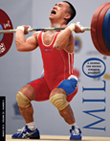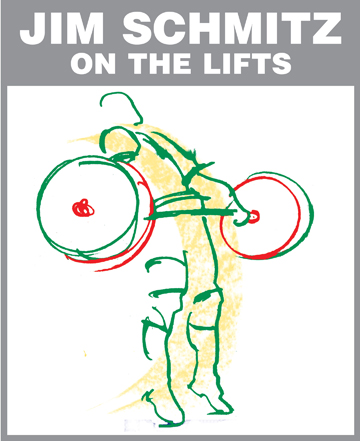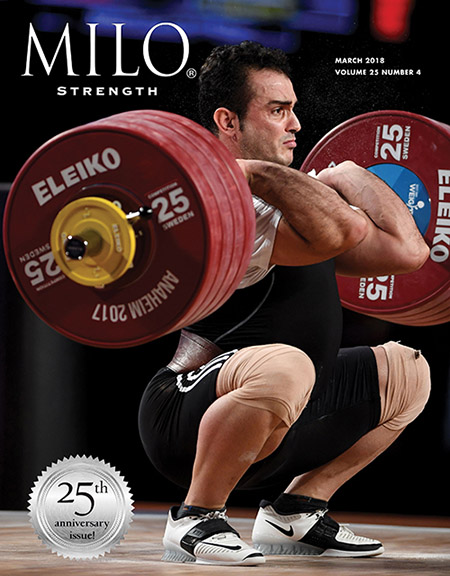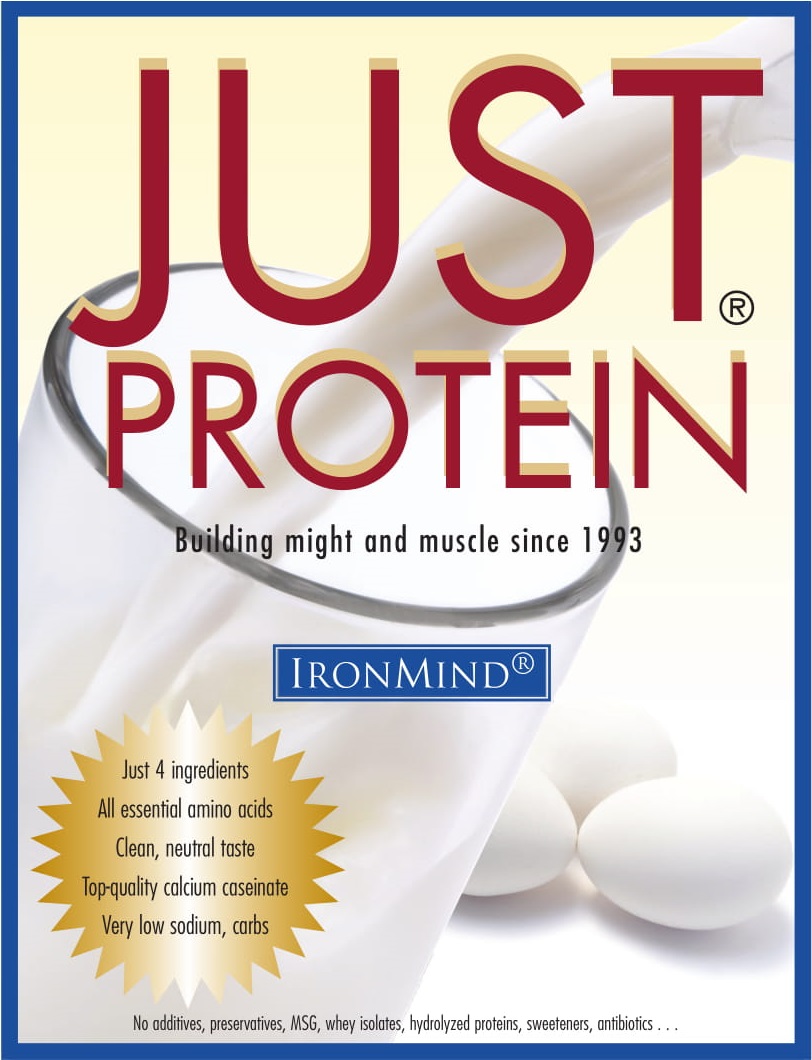The Hook Grip
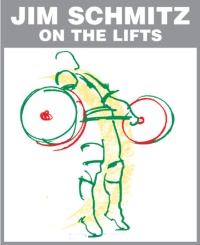
By Jim Schmitz
U.S. Olympic Weightlifting Team Coach 1980, 1988 & 1992
Author of Olympic-style Weightlifting for Beginner & Intermediate Weightlifters Manual and DVD
The Hook Grip
MILO and IronMind readers all know how important a strong grip is in lifting things. Here I want to discuss how you can grab and hold on to barbells, dumbbells, and other things that require a strong, secure grip even better by using the hook grip.
The hook grip is where you push the palm of your hand tight against the bar, grab the bar by wrapping your thumb around it, and then grasp your thumb and the bar tightly with your fingers. Most people can grab the thumb with the first two fingers while their other two fingers directly grab the bar. This technique really helps you lift more weight off the platform, especially when you accelerate for the second pull. The hook grip is the best grip you can have without using straps.
I don't know who first used the hook grip, but I asked Tommy Kono—Olympic weightlifting champion in 1952 and 1956 and silver medalist in 1960—when he learned about the hook grip, and he said he used it in 1948 when he took up weightlifting. He said he read about it in a book or magazine. I've asked many other weightlifters who have been around for a long time, and they all said they don't know who was the first person to use it, but that someone showed them and they usually can't remember who it was. I know I learned it in 1966 from Walt Gioseffi, many-time California state champion and record holder in the 1960s. I can't find any mention of it in my old books and magazines on weightlifting.
I've taught thousands the hook grip, as have all weightlifting coaches, and in fact it is in every coaching course and book on weightlifting these days. I don't teach it during the first workout for three reasons: 1) it is uncomfortable and painful for most and I don't want beginners focusing on their thumbs; 2) I want beginners to develp their grip strangth; and 3) I want beginners' grips to give out before their backs or something else does.
A little test I use to convince people of the value and benefit of the hook grip is hanging from a chin-up bar. I have them hang from the chin-up bar with a thumbless grip (with the thumb on the same side of the bar as the fingers); then I have them hang using the thumb around the bar and on top of the fingers. Finally, I have them use the hook grip and hang. Everyone is surprised how long they can hang with the hook grip—they usually give up because their thumbs are hurting, not because their grip is giving out. Try this little test yourself; it will surprise and impress you.
It takes about two weeks for one to grow accustomed to and comfortable with the hook grip. Everyone I teach tells me it feels unnatural and weird and I have to remind them to hook on all lifts—snatch, clean, and pulls. There is usually resistance when I tell them to use the hook all the time. As I've said, it takes generally two weeks to grow accustomed to it, but my gym record is six weeks. I was training a javelin thrower, Nicole Carole (1996 national champion and Olympian), and she had been doing Olympic lifting in her training for years and could do pretty good snatches and cleans with the thumb outside the fingers. When I showed her the hook grip in 2001, she didn't like the way it felt and was very resistant to doing it. I had to make a bet with her that she had to try it for four weeks and if she didn't like it, she could go back to her old grip. After four weeks she still didn't like it, but because she saw all the other lifters in my gym—especially the women who weighed less than her and lifted more—doing it, she said she would give it two more weeks. At the end of the additional two weeks (for a total trial period of six weeks) she said it felt good and she felt it was a better way to grip the bar.
Another concern with the hook grip is what to do when the bar turns over in the catch or receiving position in the snatch and the clean. If it feels good to keep the hook, do so; if it feels good to let the thumb pop out, no problem—let it happen and go with the flow.
When I teach women the hook grip for the first time, I like to say in jest, "Now I'm going to teach you how to be a hooker"—it always gets a laugh and/or a snicker. Another thing I tell people when talking about the hook grip is that all babies grab their thumbs; it's perfectly natural from birth. I also tell them that no matter how much it may hurt, no harm is being done, so just stay with it. However, if you cut your thumbnail too close you may bleed from there—just stay with it and don't cut your thumbnail too short.
Finally, I ask people, do you know how you can tell if you are really a dedicated and addicted weightlifter? If you carry your briefcase or gym bag with a hook grip, and if you hook-grip your steering wheel when driving, then I'd say you're "hooked" on weightlifting!
###
For more information on Olympic-style weightlifting, weight training, lifter profiles, and competition reports, visit our Weightlifting Resource Pages.
Jim Schmitz’s gold-medal articles on weightlifting and weight training are regularly featured in MILO: A Journal for Serious Strength Athletes.
Take advantage of what Jim Schmitz, absolutely one of the best American coaches in the sport, can teach you in his Olympic-style Weightlifting for the Beginner & Intermediate Weightlifters Manual and DVD.

